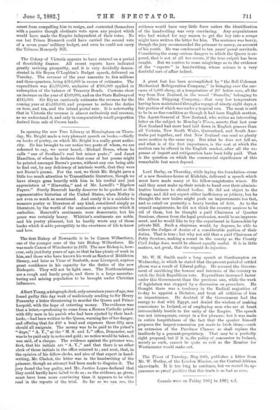Albert Young, a telegraph clerk, only seventeen years of age,
was found guilty this day week of maliciously sending to Sir Henry Ponsonby a letter threatening to murder the Queen and Prince Leopold, with the hope of extorting money. The evidence was that a letter,—professing to come from a Roman Catholic priest with fifty men in his parish who had been ejected by their land- lords,—had been written to the Queen, warning her of her danger, and offering that for £40 a head and expenses these fifty men should all emigrate. The money was to be paid to the priest's ‘` dupe," A. Y.," at the " M. S. and L." office, Doncaster, and was to be paid only in notes and gold ; no notice would be taken, it was said, of a cheque. The evidence against the prisoner was, first, that his initials are " A. Y.," and that there is no other clerk of those initials in the office referred to ; and next, that, in the opinion of his fellow-clerks, and also of that expert in hand- writing, Mr. Chabot, the letter was in the handwriting of the prisoner, though an attempt had been made to disguise it. The jury found the boy guilty, and Mr. Justice Lopes declared that they could hardly have failed to do so ; so the evidence, as given, must have been more convincing than it appears to be when read in the reports of the trial. So far as we can see, the evidence would have very little force unless the identification of the handwriting was very convincing. Any acquaintance who had wished for any reason to get the boy into a scrape might have written the letter for him. The sentence was heavy, though the jury recommended the prisoner to mercy, on account of his youth. He was condemned to ten years' penal servitude. Considering the many serious dangers to which the Queen is ex- posed, that is not .at all too severe, if the true culprit has been caught. But we confess to some misgivings as to the evidence of the " experts " in handwriting, whose science is a very doubtful sort of affair indeed.














































 Previous page
Previous page